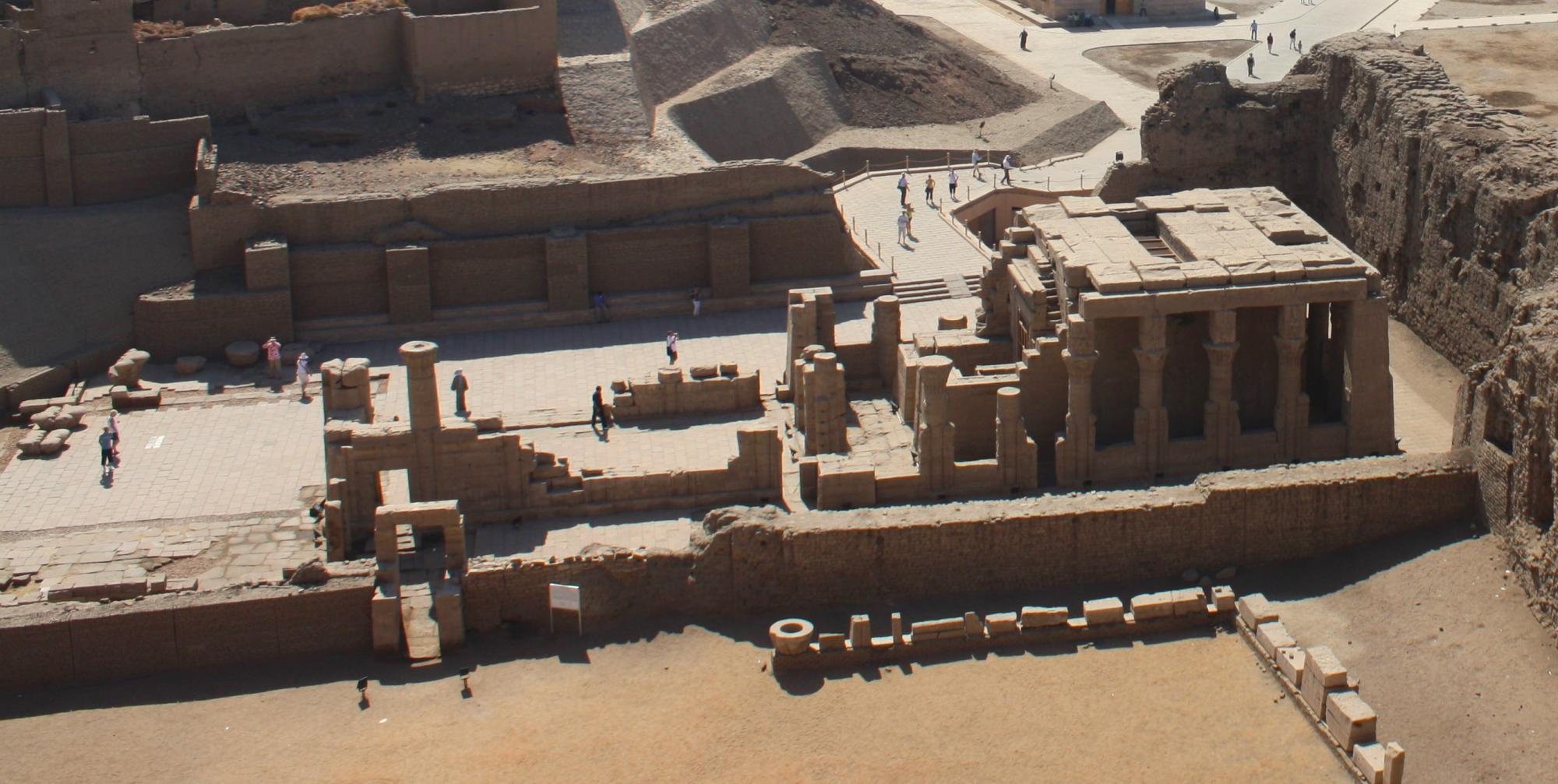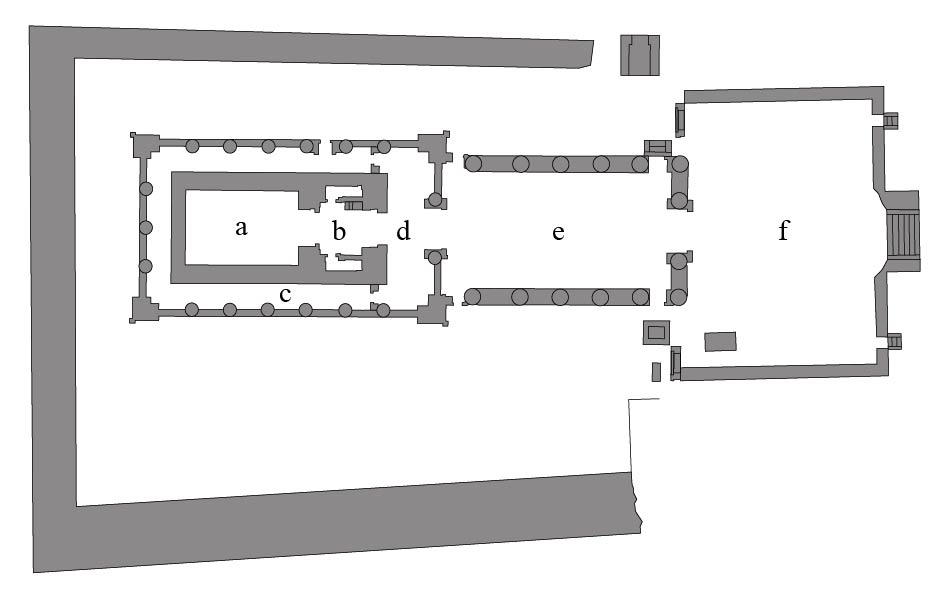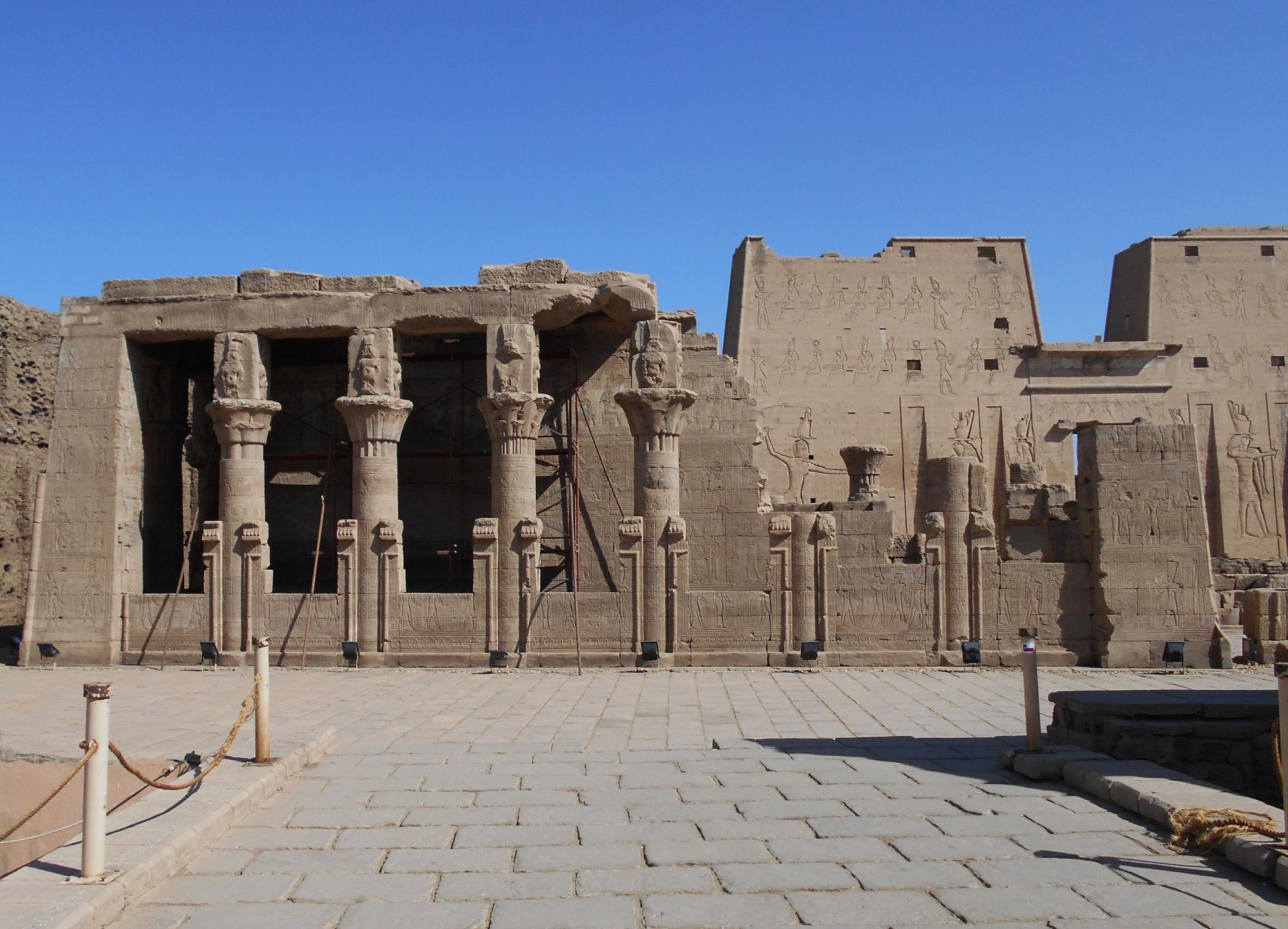What is a Mammisi?
A mammisi, also called Birth House, is a type of temple which developed during the Late Period (664–332 BCE) and continued being built up to the Roman Period (30 BCE–395 CE). The main purpose of these small temples was to annually re-enact the birth and coronation of the divine child of the main god and his/her consort of the town. By association, the celebration was also linked to the renewal of the king’s power. Mammisis were always attached to the town's main temple, and located in front of it. Over time, mammisis acquired their own permanent cult statue and set of daily rituals, ultimately becoming small, independent temples of their own.

The Mammisi of Edfu
The mammisi of Edfu was built during the Ptolemaic Period (332–30 BCE). Two kings are mentioned in the temple's inscriptions: Ptolemy VIII-Evergete II (170-116 BCE) and his son Ptolemy IX-Soter II (116-107 BCE). The mammisi was the destination of an annual procession leaving from the main temple to celebrate the festival of the divine birth of Harsomtus (Hor-sema-tawy), son of the divine couple Horus of Edfu and Hathor of Dendera. Performances of singing and dancing took place in the courtyard area, which was open to the public. Inscriptions on the walls of the mammisi suggest that the festival also included a dramatic recreation of the divine birth scene. Approximately 200 ritual scenes are depicted throughout this temple, and the most important are concerned with the birth, nutrition, and coronation of the divine child. Additionally, the walls were covered with various protective gods and spells to safeguard the mother and child during childbirth.

Because the divine child was associated with the rising sun, the mammisi of Edfu is oriented facing east. Walls of the inner sanctuary and some other important scenes had been originally covered with gold sheets, which would have reflected the sunlight and remind the viewer of this association. At Edfu, there are scant traces of a former paneling of the western inner wall of the sanctuary with gold sheets. The core of the building was composed of a sanctuary (a) for the temple’s main statue, which was fronted by an offering room with two side chapels (b). The northern chapel gave access to the roof via a staircase. A corridor around the structure (called an "ambulatory" (c)) was delimited by tall columns linked by screen walls. These columns represent bundles of papyrus, marsh plants, and flowers, and refer to an important myth in ancient Egypt: the myth of Isis giving birth to and hiding her son Horus in the Delta marshes. Inscriptions and scenes depicted on the external walls of the sanctuary and the ambulatory refer to this myth. At the top of each column, there is a carved image of the god Bes, protector of mothers and children during childbirth. Access to the columned ambulatory and core of the temple was controlled by wooden doors. The temple was fronted by a vestibule (d) and two courtyards (e-f), opened to the public during festivals.
The mammisi of Edfu is currently investigated by the the Institute für Altertumswissenschaften Ägyptologie of Johannes Gutenberg-Universität Mainz. For more information:
https://www.aegyptologie.uni-mainz.de/das-mammisi-von-edfu-2/


